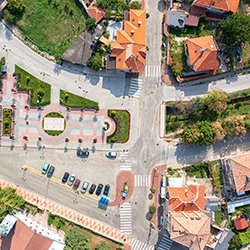Ensuring traffic safety in residential zones is crucial for protecting pedestrians, cyclists, and drivers. With increasing traffic volumes and higher vehicle speeds, residential areas face significant safety challenges. This article explores how speed bumps, speed humps, and other speed reducers can enhance traffic safety in these zones.
The Importance of Traffic Safety in Residential Areas
Residential zones are meant to be safe havens for families, children, and elderly residents. However, the growing number of vehicles and speeding incidents pose serious threats to safety. Understanding and implementing effective traffic safety measures is essential for creating secure environments.Why Traffic Safety Matters
Traffic safety in residential areas is not just about preventing accidents; it’s about improving the quality of life. Safe streets encourage outdoor activities, reduce noise pollution, and foster a sense of community. Ensuring that vehicles adhere to safe speeds is a fundamental aspect of traffic safety.Speed Bumps: A Key Traffic Safety Measure
Speed bumps are one of the most effective tools for controlling vehicle speeds in residential areas. They are raised sections of pavement designed to slow down vehicles, making streets safer for everyone.Types of Speed Bumps
- Traditional Speed Bumps: Typically 3 to 6 inches high and 1 to 3 feet long, these create a significant jolt that forces drivers to slow down.
- Speed Humps: These are slightly longer and flatter than traditional speed bumps, reducing speed to a lesser degree while maintaining smoother traffic flow.
- Speed Tables: These elongated speed bumps have a flat top, providing a smoother transition and are often used where pedestrian crossing is frequent.
- Rumble Strips: These consist of small bumps or grooves that create vibrations, alerting drivers to reduce speed.

